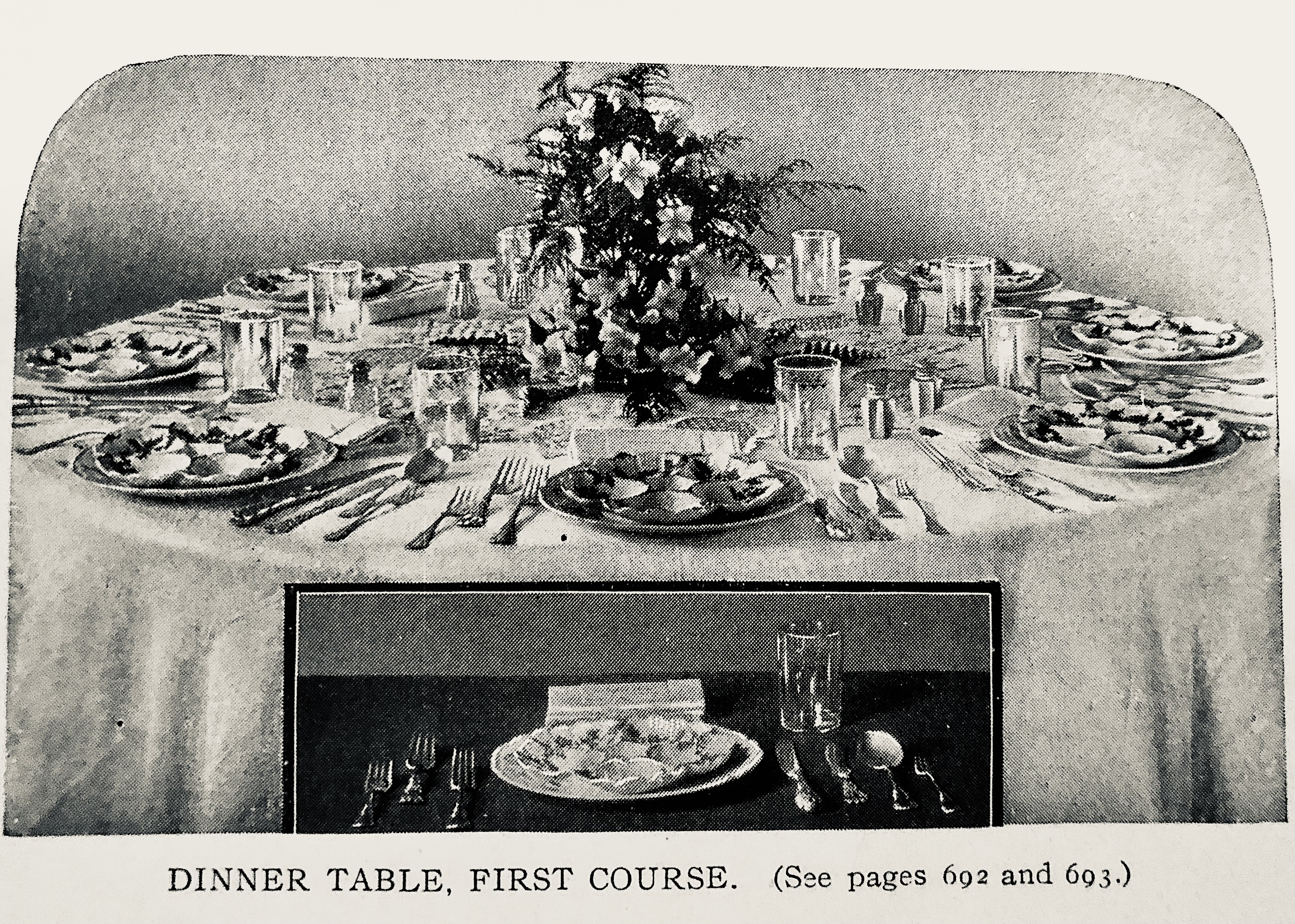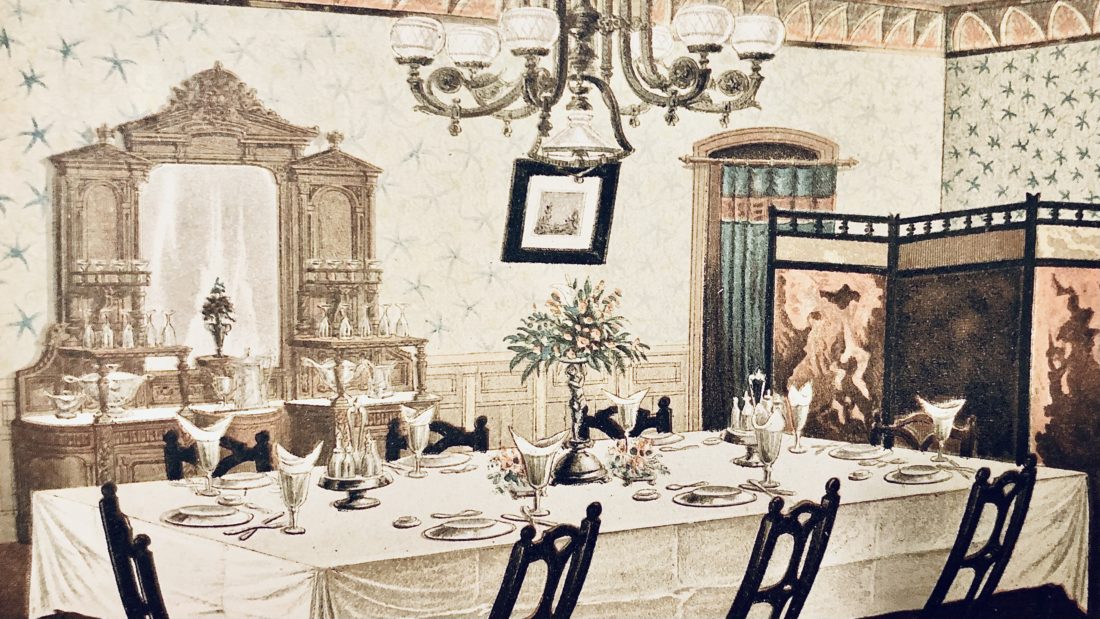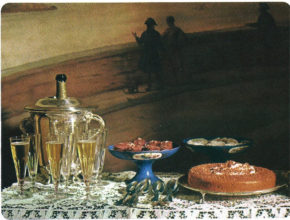Prior to the turn of the century, Semi-Formal would have meant black tie. Men wore tailed coats or dinner jackets, waistcoats and pumps or patent leather shoes. Bib front shirts would be starched to the extreme and if they were traveling to the event, gloves and top hat would be worn. Women would have dressed in floor length dinner dresses, not quite a ball-gown, but still very formal . Dinners could have six or more courses and the hour remained late as it had been for formal dinners. Eight or Eight-Thirty was the norm. A few of the most intricate formalities of the formal dinner would be dispensed with, but in practice, Semi-Formal dinners were exceedingly rule bound.
During the period after the 1930’s when formal entertaining was still done and the 1990’s when it finally seemed to be relegated to awards shows and rare events with European aristocrats, the semi-formal dinner became the middle ground that people seemed to embrace. Easing up on the more formal aspects of dinner dress, men wore dinner jackets in black or white, (not business attire) which might feature a waistcoat or a cumberbund and ceased to wear gloves. Shoes no longer had to be pumps or patent leather, and so more men wore dress shoes or oxfords. Ladies donned dinner dresses or as the century wore on, dinner suits, which were also very formal. Gloves were still required for women.
By the 30’s, a semi-formal dinner might only have four or five courses. Soup or fish appetizer (usually a cocktail or oysters), entree, meat with side dish and then dessert. The entree might be replaced with a salad and cheese after the meat.
Even then, certain traditions of the formal dinner remained constant: When one arrived, the host would introduce the person who would become ones partner for dinner. This person would sit next to you at dinner and they would enter the dining room with you. When dinner was called, one sought out ones partner and then escorted, (or was escorted by) them into the dining room.
These introductions would have happened in a separate room that was used for about a half hour before heading into dinner. In a large house, this was a drawing room or reception room which lead into either the dining room or an ante room that then opened onto the dining room. In smaller homes the living room or parlor was used.
This period before entering the dining room was purely for conversation. Sometimes an aperitif would be served, but not much else. In the twenties, a cocktail in the living room to lubricate social interactions might also appear, but only in houses that embraced the modern and in America, that wasn’t a high percentage, (and then there was prohibition). In a sign of how quickly times change, by the fifties, the pre-dinner cocktail was expected pretty much everywhere. Soon after, an hors d’oeuvres was introduced to whet the appetite for dinner.
In larger parties, there might be escort cards on a side table with the male guest’s names on them. These informed a gent whom he would be escorting to dinner. This was done when it was unlikely the host would have the time to introduce each couple personally. If place cards were not to be used at the table, a small diagram of the table would be placed somewhere easy to see, showing the seating arrangement and allowing the gentleman to know where he was headed.
Sometimes these table guides replaced escort card or introductions. Here the diagram would show each person where they were seated. But this was usually only done with family or close friends, when everyone knew each other well and no escorting was needed.

Once in the dining room, the gentleman would pull out the seat for his partner and then seat himself. At that point everyone waits for the hostess. When she places the napkin in her lap, so does everyone else. As the meal progressed, the hostess would first speak to the person on her right. Everyone at the table would follow suit. After a while, she would turn to the person on her left and guests would then be free to speak to the guest on their left as well.
One real difference between a formal and informal dinner is the number of servants. To host a truly formal dinner requires a large number of servants. The semi-formal dinner required fewer. Semi-Formal dinners are nearly aways done as compromise service. One would still need a waitress to bring out the dishes, but multiple footmen and a butler to pour the wines would not be expected or necessary.
Many of the Semi-Formal dinner’s formalities were those used in the Formal dinner, it was only the dress code, reduction of servants and the shortening of the menu that mainly delineated Semi-Formal from Formal until relatively recently.
After-dinner coffee in the living room to finish, would also be expected. This would be demitasse service, (see my earlier post). After that people could leave after 20-40 minutes in the Victorian era, 15-30 minutes in the Edwardian era to the 1930s and 15 minutes after that. These were not hard and fast rules as we have discussed before. It depended on the host, the community and what the local etiquette dictated.
So, are you enjoying dinners out again? I hope so. Much love, Cheri


